[ad_1]
From walking through the greenery at Shinjuku Gyoen to catching a show at the Kabuki theatre, here’s our list of the best things to do in Tokyo, Japan.
Tokyo is one of the world’s most unique cities.
The entire city is packed to the brim with cool and amazing attractions, and there is something fresh and exciting in every corner.
It’s a city that’s both crowded and relaxed at the same time, because while it’s a city of intimidating size, almost every neighbourhood has a homely feel.
You’ll find a busy shopping street around one corner, and a peaceful garden around the next.

Don’t Miss These Top Things to Do in Tokyo
There are a lot of great things to do, and this is a destination where you’ll absolutely never be bored or unsure of what to see in Tokyo next.
Tokyo Station is well connected to other parts of Japan as well, and there are lots of day trips to take which are even easier with a Japan Rail Pass.
Make sure to take as much time as you need to explore Tokyo, as it’s a city unlike any other in the world.
READ MORE: Planning your trip? Check out our ultimate guide to how to spend the perfect 3 days in Tokyo!
Trip Out at the Robot Restaurant
Look, we’re just going to call it now – The best thing to do in Tokyo is to go to the Robot Restaurant!
Not what you were expecting? Well trust us on this, just like the many tourists before you have…
Japanese culture in recent years has become an eclectic mix of old traditions and futuristic trends. It’s one reason why a visit to Tokyo is such an incredible experience.
And while most people might think of temples, museums and the cherry blossom season when planning out their holiday here, no trip is complete without a night out at Robot Restaurant.
Located in Shinjuku, the best way to explain the Robot Restaurant show is that it’s like doing acid in a real-life sci-fi movie.
Without giving too much away, the sensory overload show features lasers, trance music, enormous robotic dinosaurs and samurai warriors, half-naked cos-play dancers and a hell of a lot more.
Watch the video below and just go. It’s honestly amazing.
HOT TIP – Don’t purchase the dining experience. The meals are mediocre and overpriced. Eat before or after at any one of the incredible restaurants close by.
Get Swept Away at Shibuya Crossing
Jump on the metro to Shibuya Train Station and head up to the street for one of the craziest pedestrian crossings in the entire world!
Shibuya Crossing is the world’s busiest intersection in downtown Tokyo that is swarmed with hundreds, sometimes thousands, of people every time the lights go red.
Walking across the road at the Crossing is a trip, but for a real insight into the craziness head upstairs at the nearby Starbucks, grab a chair by the window and observe the mayhem below.
It’s like seeing an ant colony swarm all over the intersection. Well worth doing!
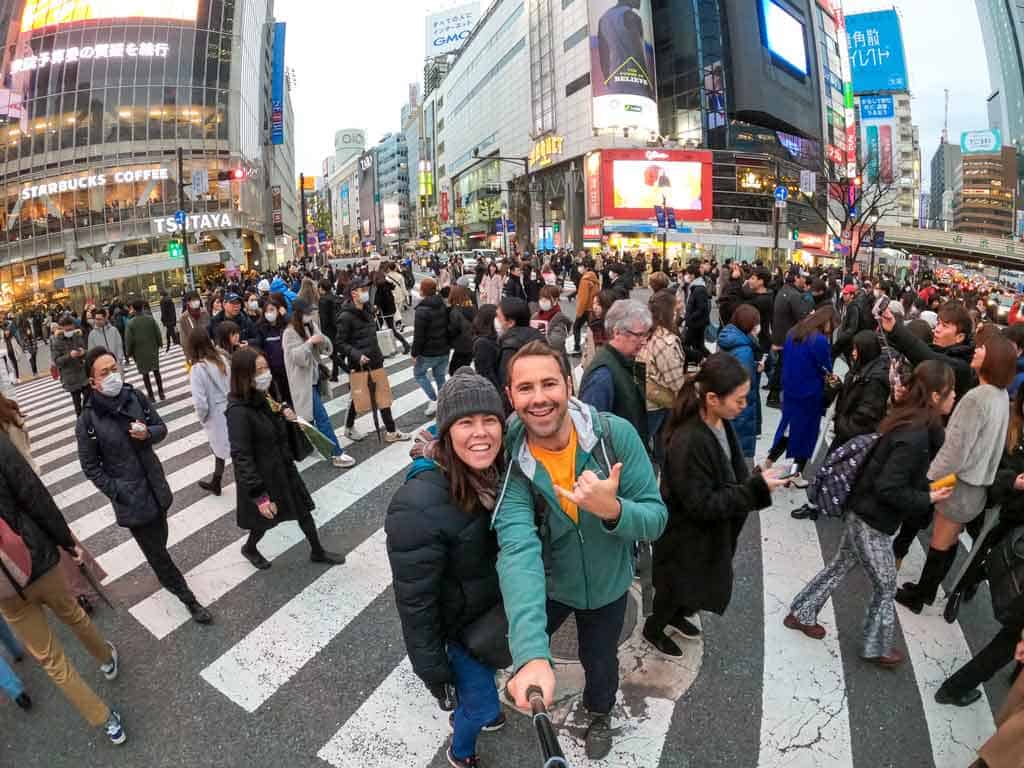
Go to a Sumo Wrestling Match
Sumo wrestling is one of the country’s most curious activities, and in actual fact is the national sport of Japan!
Made famous around the world thanks to the large size of the Sumo wrestlers and the sheer ferocity they throw into their matches, seeing the sport in person is guaranteed to be a real highlight of your time in Japan.
Kokugikan Sumo Stadium is where you can go to check out the biggest sumo matches in the country, including championship bouts, but you can also visit a number of smaller venues for something more intimate.
If you’re feeling really keen, why not try sumo yourself?
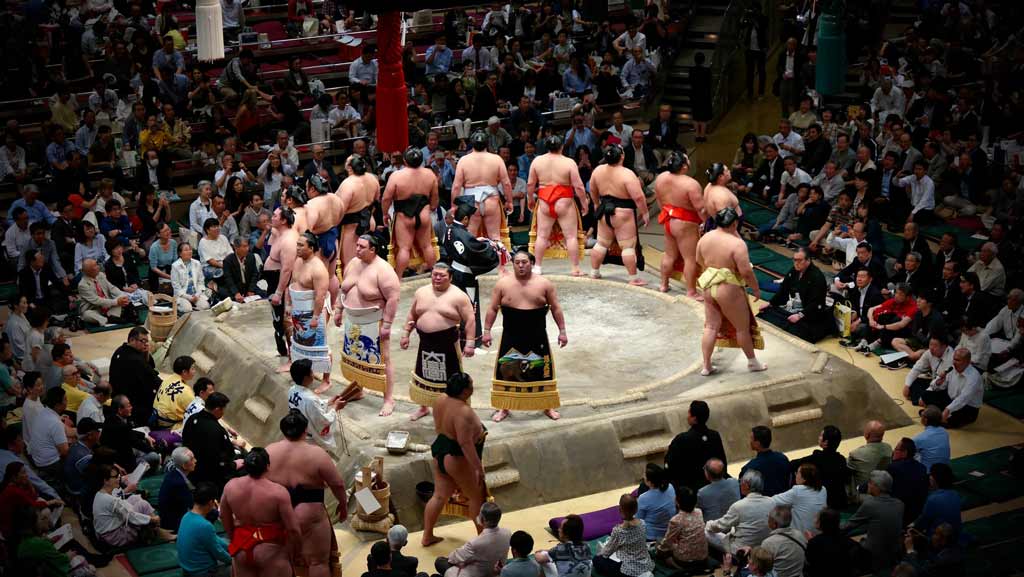
Eat All the Japanese Food
Japanese food is without a doubt some of the best in the world. Sushi, ramen, udon – the flavours are to die for, and the variety in the country is hard to comprehend.
Every corner of the country has their own Japanese snacks, meals and drinks, but here in Tokyo is where you’ll find them all come together in street food stalls, markets and world-class restaurants. You can even get decent food from a vending machine and 7/11!
You can book in for a Japanese cooking class or a sushi-making class (this one is well worth doing).
Or dive into a fresh conveyor belt sushi restaurant, eat ramen literally everywhere (this place in Tokyo Station is the best vegan ramen restaurant in the world) or simply hop your way around popular spots like Takeshita Street, a main shopping street in the city.
The izakayas, which are like local pubs that do great food, have great traditional Japanese cuisine and occasionally craft beer too.
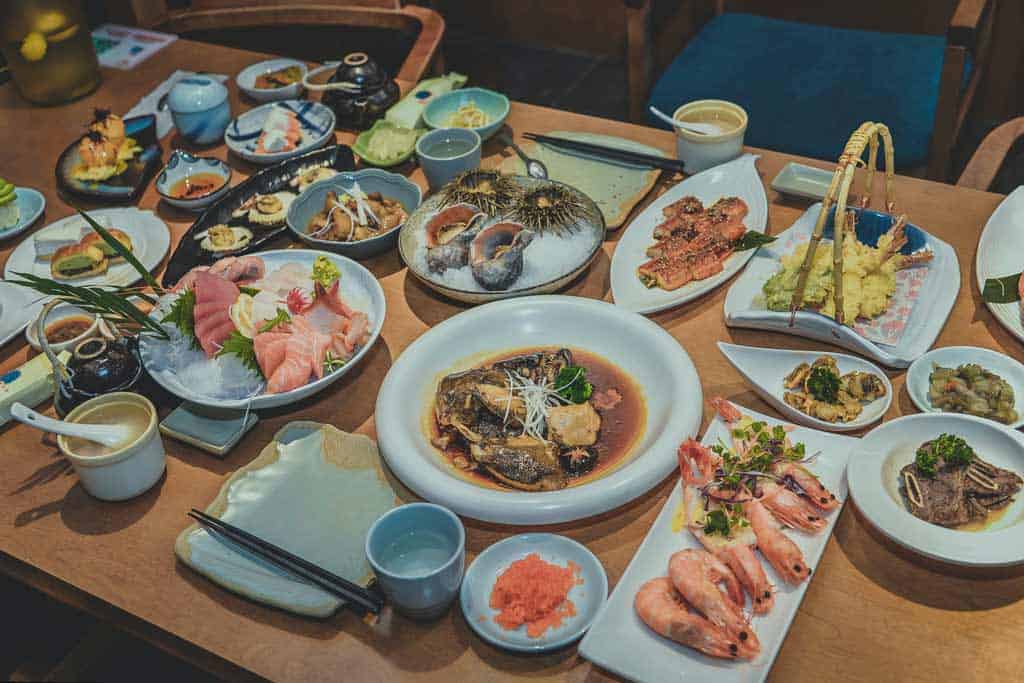
Explore Tokyo’s Past At Sensoji Temple
Tokyo itself doesn’t have a specific landmark like the Statue of Liberty or the Eiffel Tower to set it apart, but the Sensoji Temple is the next best thing.
This place is Tokyo’s oldest temple by a long margin, and should be high on any Tokyo bucket list of destinations to visit.
Although it was constructed in the early 7th century AD and was considered important since then, it was only in the 1600s during the Edo period when it reached a status of absolute importance.
By decree of the emperor at the time, this temple served as a household of sorts for his family, but it mostly was used as a way to protect the entrance into Edo, which was the name of Tokyo at the time.
Nowadays it’s an enormous temple, and it’s one of Tokyo’s most beautiful buildings. It’s a place for spiritual healing, first and foremost, but it’s also one of the most stunning Tokyo tourist attractions.
We’d recommend you check Sensoji Temple out on this tour, along with several other amazing landmarks such as Imperial Palace Gardens and Meiji Jingu Shrine.
Here you’ll find plenty of shops that are older than a century, and very unique sweet treats that you’ll rarely be able to find anywhere else in the city.
- Location: Asakusa
- Opening hours: 6 AM – 5 PM
- Price: Free of charge
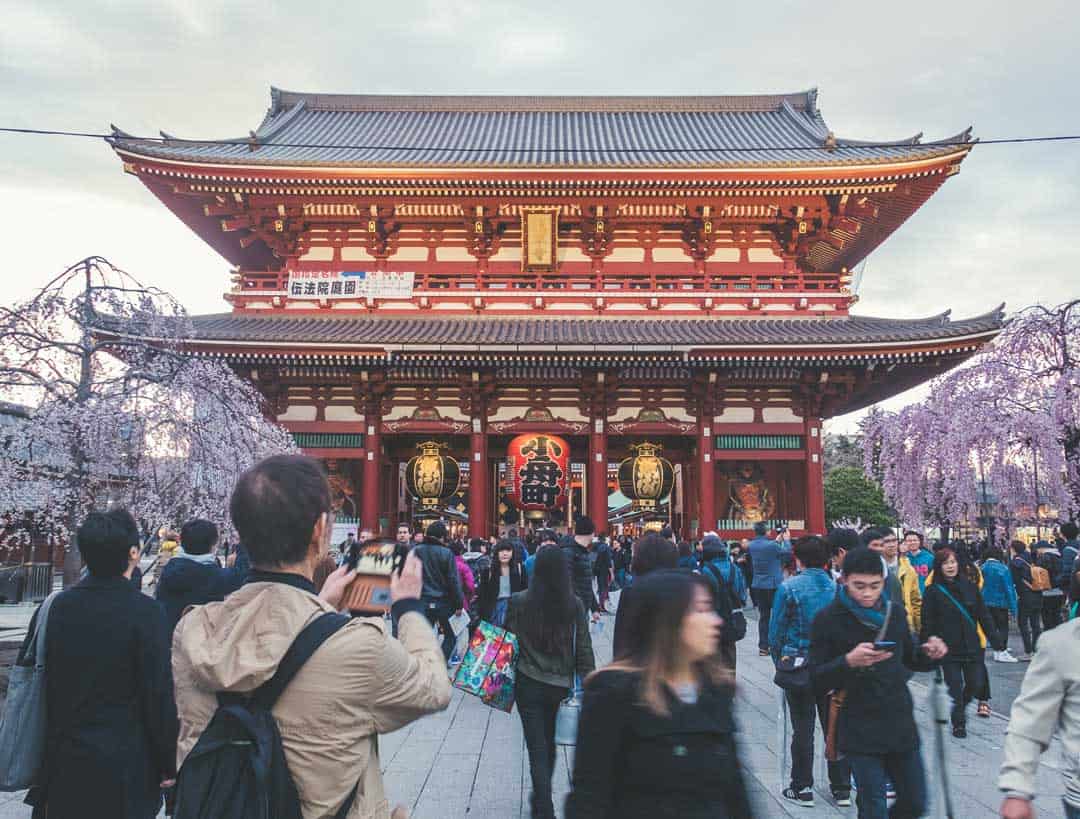
Marvel at the Beautiful Cherry Blossom Season
While Japan is amazing to visit at any time of year, if you can time your trip during the cherry blossom season you’re in for a real treat!
Cherry blossoms (Sakura) are a symbol of the ephemeral beauty of life and the transience of all mortal things in the Japanese culture.
This means, for them, that it is a way to remember people who are gone and those they loved in the past.
The flowers have a deep connection with their culture, and are seen as representative of both their beauty and fragility.
The blossoms are in full flower in the spring, usually starting at the end of March, and on some days it seems as if their petals are falling like rain.
They cover the branches of the trees for a couple of weeks before they finally fall from the tree branches, leaving behind green leaves that will grow into new flowers the following year.
The cherry blossom trees are planted in many different places throughout the city and while they last they make for a beautiful sight that draws many people out to see them.
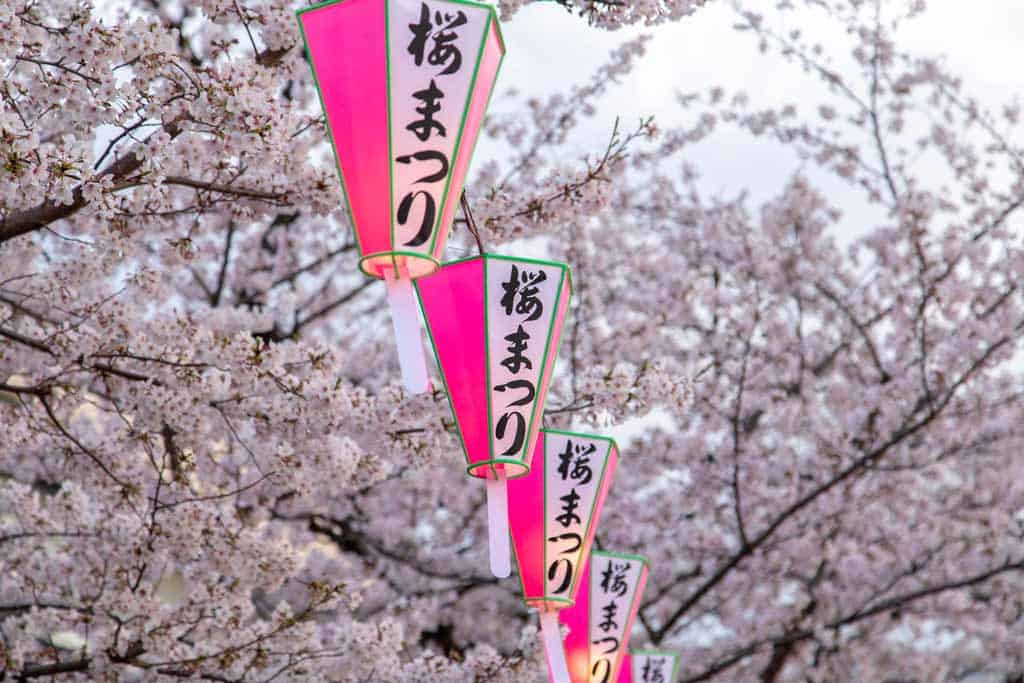
Relax At Shinjuku Gyoen National Garden
There are few other more relaxing spots in Tokyo than Shinjuku Gyoen National Garden.
The park’s origins can be traced back to the Edo period when it was being used as the private gardens of a local feudal lord, after which it was turned into botanical gardens and then turned over to the government.
During World War II, the park saw extensive damage. Because of which, they had to be closed off until further renovations, until they were fully reopened to the public in 1949.
The National Garden today is one the most popular attractions in Tokyo, both for tourists and locals alike.
It consists of three different types of parks, which are a Japanese landscape garden, a French, and an English garden.
Shinjuku Gyoen is also the home to a very large concentration of cherry blossom trees, which give this park a very unique look.
There are also plenty of unique Japanese-style ponds, which are dotted with bridges and islands, each of which are uniquely decorated with shrubs, pavilions, and trees.
- Location: Shinjuku
- Opening hours: 9 AM – 5:30 PM
- Price: 200 yen
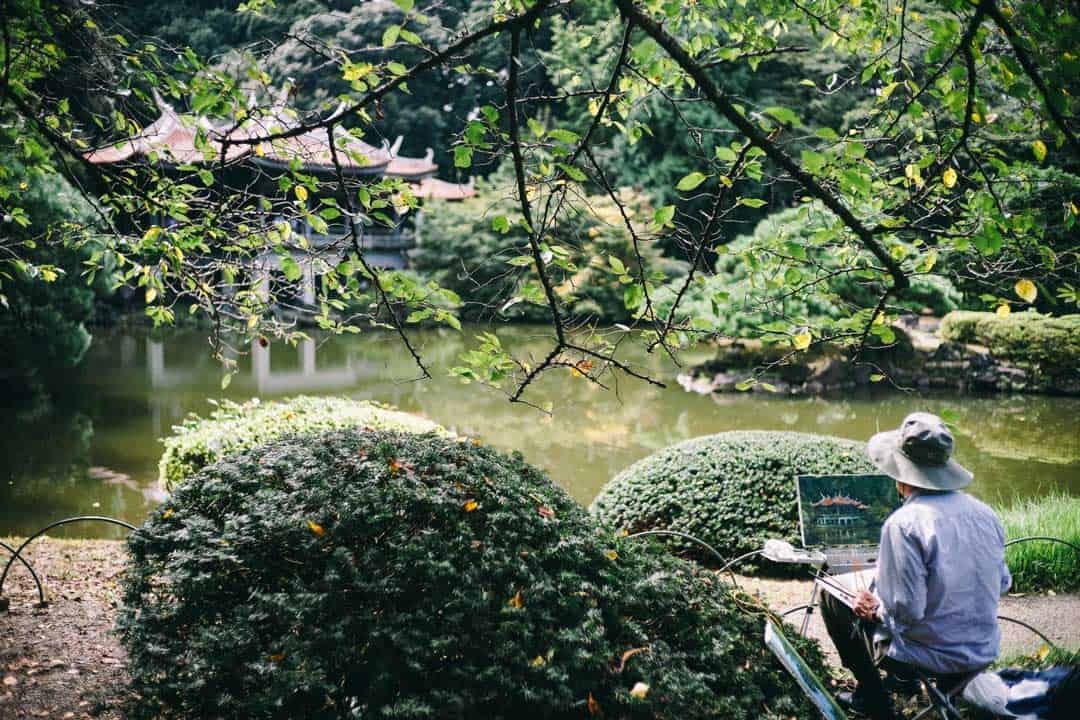
Visit the Majestic Imperial Palace
Located at the site of the former innermost point of defense at Edo Castle, the Imperial Palace is one of the most popular and well-known Tokyo attractions.
It used to be an entire complex of buildings in the past, but after centuries of warfare, most of those buildings have been destroyed and was never rebuilt.
The Palace was the residence of Japan’s Royal Family, and it also used to be the home of the Tokugawa shogun who ruled Japan in the Edo period.
Today, most of the palace’s grounds are open to the public, and there are several guided tours, both in English and Japanese, that explain to visitors the importance of the palace.
Visitors aren’t allowed to enter the inner grounds of the palace, except in specific circumstances on January 2nd and December 23rd.
Although the inner grounds are not open to the public, the East Garden is open to the public throughout the whole year, and are practically a full attraction all on its own.
- Location: Chiyoda
- Opening hours: every day from 9 AM – 11:15 PM and from 1:30 PM – 2:45 PM (closed on Sunday – Monday)
- Cost: Free
READ MORE: Check out our list of the best places to visit in Japan!
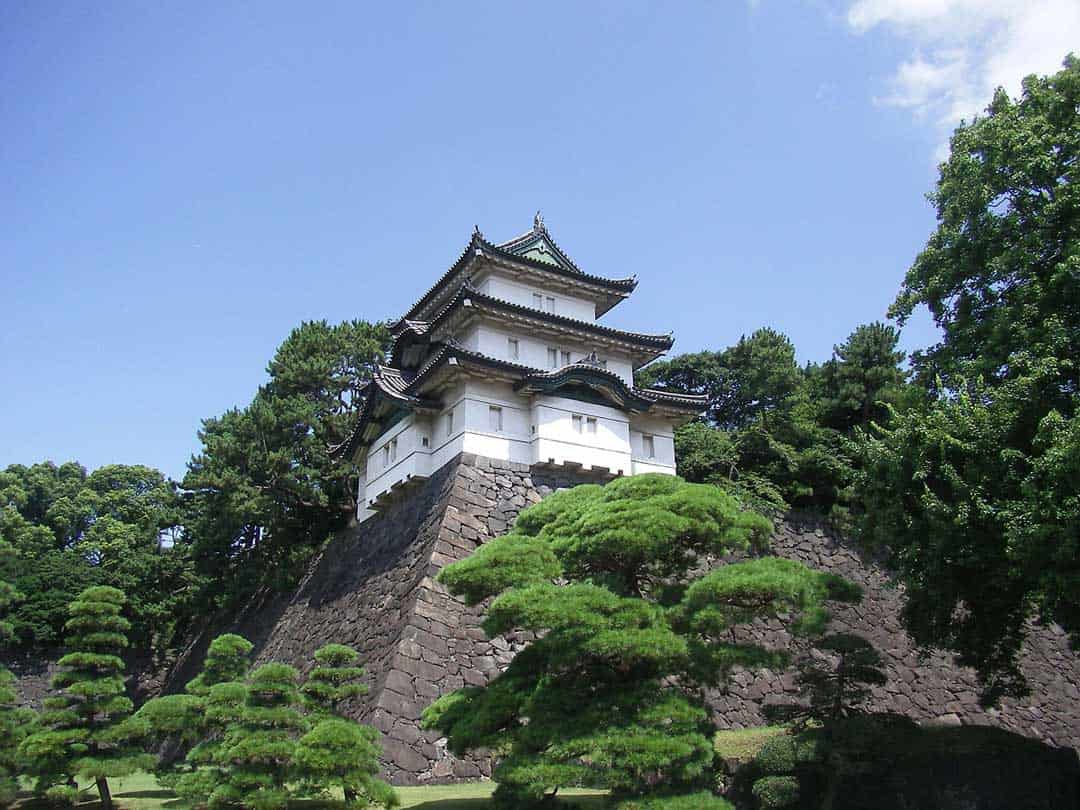
Make A Stop At Meiji Shrine
Emperor Meiji was the first emperor of modern Japan, which is a period that started in 1867 after the feudal Edo period was over.
This shrine is dedicated to both Emperor Meiji and Empress Shoken, who have been revered and are considered vital to the restoration and modernisation of Japan.
The shrine itself was completed in 1920, which was 8 years after the emperor had passed away, and 6 years after the empress.
Meiji Shrine, and its adjacent Yoyogi Park, together create an enormous green lung of the city of Tokyo, which makes the shrine an ideal spot for a relaxing walk.
The shrine is considered one of the most peaceful and calm things to see in Tokyo, and it’s generally a popular spot throughout the year.
It sees over three million visitors in the first days of the year due to the year’s first prayers.
In this shrine, you’ll find a Treasury House that holds some of the personal belongings of the emperor, as well as a prayer wall where you can write down your prayers and then tie them up to the wall.
- Location: Near Shibuya Station, or Harajuku Station
- Opening hours: every day from 5 AM – 6:30 PM
- Price: Free entrance to the shrine, 500 yen to visit the Meiji Jingu Gardens, 1000 yen to visit the Meiji Jingu Museum
READ MORE: Here’s our latest article all about the top day trips from Tokyo!
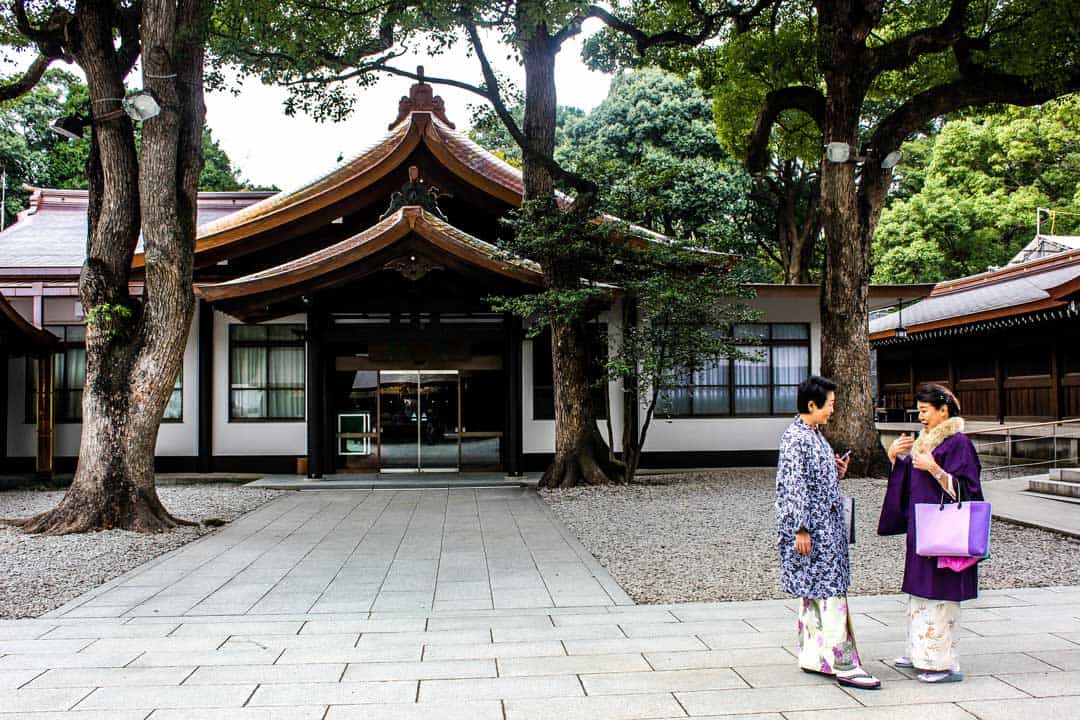
Spend the Day at TeamLab Borderless
If you’re ready for another futuristic Tokyo tourist attraction, you can’t miss TeamLab Borderless!
TeamLab Borderless is the world’s first interactive digital art museum, filled with lights, lasers and music.
Located at Aomi Train Station, Odaiba, its team of artists and engineers from around the globe are creating a new form of human-computer interaction.
The long-term vision of the TeamLab Borderless is to create an environment that fosters social interaction among visitors and between people and technology.
Unlike conventional museums, Borderless does not portray art pieces in one fixed location but instead organises them throughout a building without boundaries – the entire space becomes a work of art for visitors to explore.
Visitors are invited to take part in interactive digital artwork, engage in creative play facilitated by AI installations, and enjoy dynamic musical performances.
Attend Kabuki Theatre
As one of Japan’s most traditional forms of entertainment, Kabuki Theatre is considered a Tokyo must see for any visitor to the country.
It’s an old form of theatre, one that uses dramatic physical expressions as the main centrepiece of storytelling.
Today Kabuki Theatre is performed exclusively by men, even though in the past it was performed exclusively by women.
The show itself is not only acted out, but several traditional instruments that lend it an extra air of drama also accompany it.
Kabuki stories tend to be centred around historical characters and events, kind-hearted dramas, love tales, moral conflicts, tragedy, and conspiracy.
When you attend Kabuki Theatre you’ll notice that there are people dressed in black that sometimes come on stage and hand the actors props and items, and aren’t considered as part of the play.
Those people dressed in black are assistants to the troupe of actors whose job is to make the play feel seamless and fluid.
There is no specific dress code for Kabuki Theatre, though it is recommended to wear nice shoes and decent clothes in general.
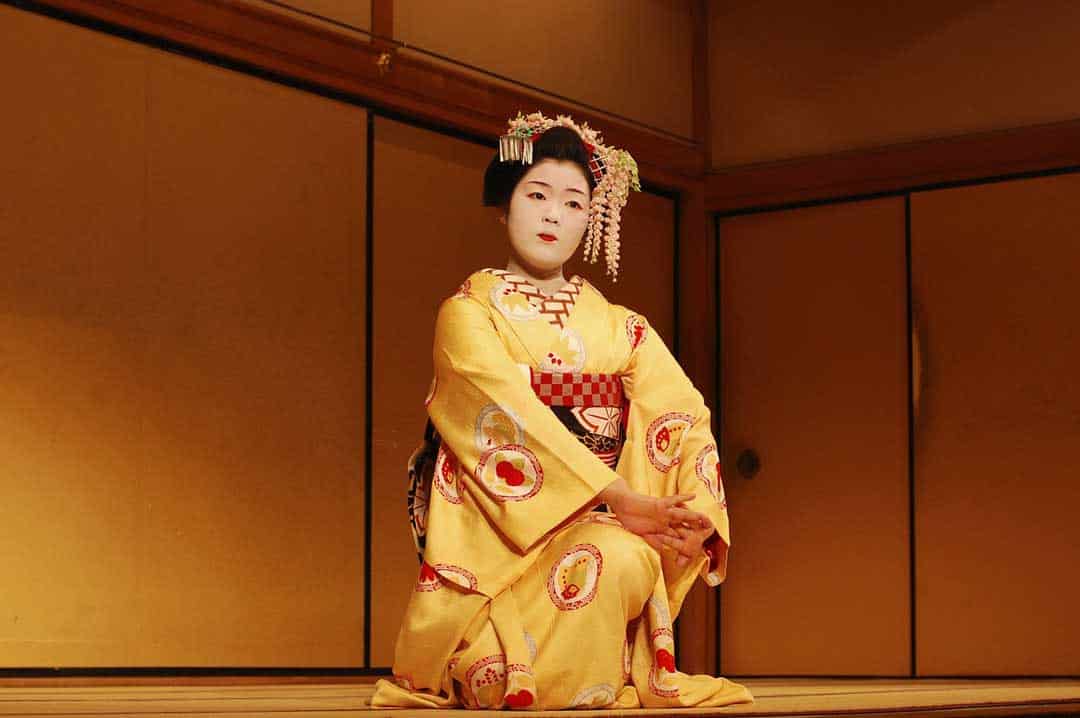
Experience The Unique Edo-Tokyo Museum
Tokyo used to be called Edo up until Japan entered its modern era in 1867.
It was an entirely different city back then, with a very different focus, which is what this museum is striving to preserve.
The building that the Edo-Tokyo Museum is housed in is entirely unique, and is an attraction all on its own.
However, the largest star of the show is definitely the permanent exhibition inside the museum, which completely captures the look and feel of Tokyo before it was actually called Tokyo.
There are plenty of interactive exhibits that completely showcase Edo’s architectural, cultural, and political Japanese history, its commercial importance, and there are even life-sized figurines and models.
Exploring this museum is definitely one of the best things to do in Tokyo, as it’s a completely unforgettable experience.
(Currently the museum is closed for restorations. Check the website for updates!)
- Location: Ryogoku Station
- Opening hours: 9:30 AM – 5:30 PM
- Price: 600 yen
READ MORE: Here’s our ultimate Japan travel guide, just for you!
Zip Around the Streets in Real Life Mario Kart
If you grew up playing Nintendo, there’s a good chance you’ve spent countless hours on Mario Kart.
Now imagine if it was real life, not just a video game – That’s what you get in Tokyo!
One of the most unique Tokyo activities is to rent a go kart and zip around the busy streets, dressed up like your favourite video game character!
The go kart experience, also called street kart, is an insane amount of fun. And while you can’t throw banana peels at each other (you’re driving on real streets and have to follow the laws after all), it’s still a thrill weaving between cars and through busy neighbourhoods.
There are a number of routes you can go to, including through Akihabara, over the Rainbow Bridge and around Tokyo Bay, so pick where you want to go and strap in and live out your Mario Kart fantasies.
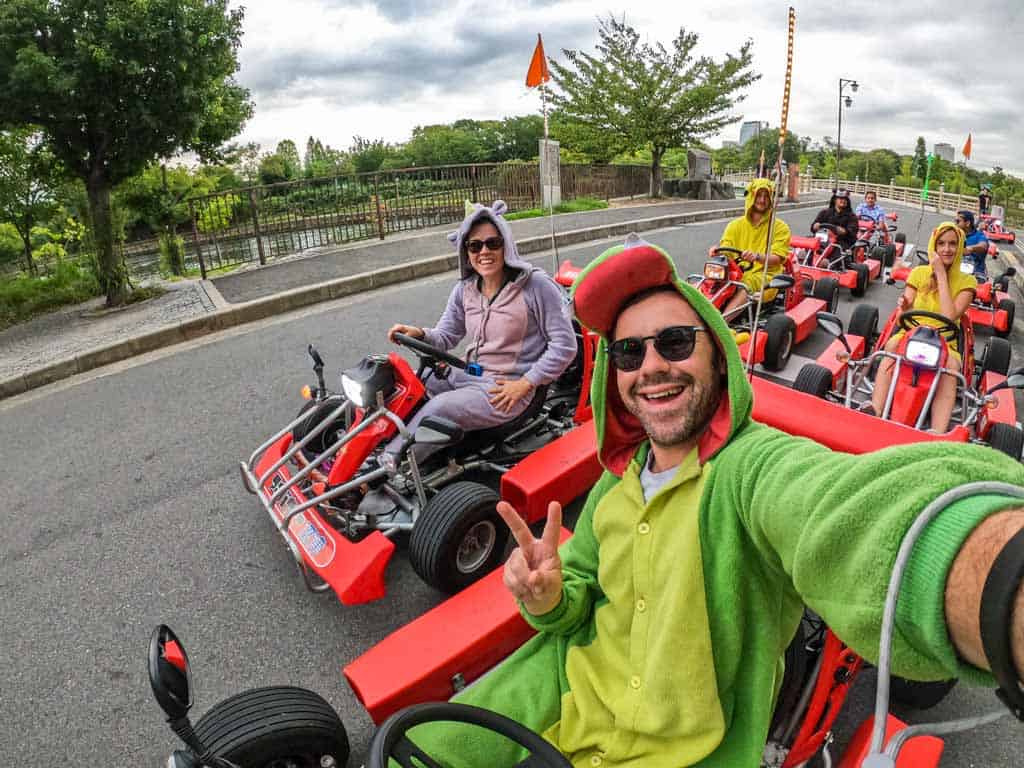
See From Atop the Tokyo Tower
Japan suffered heavy losses in the Second World War, and was generally considered a country in ruin in most places.
What followed after the war were years of accelerated reconstruction and rebirth, which were celebrated with the construction of the Tokyo Tower in 1958.
The tower is similar in form and shape to the Eiffel Tower – it is 333 meters, which makes it 13 meters taller than the Eiffel.
It has two observation decks, one at 150 meters, and another at 250 meters.
On a clear day from the top of the Tokyo skyline, you can see as far as the Tokyo Skytree and Mount Fuji, as well as the Zojoji Temple.
Tokyo Skytree is the tallest building in the world at 634 meters tall. If you love panoramic views from tall heights, visit the Tokyo Skytree after the Tower!
The Tokyo Metropolitan Government Building is another great viewpoint in the city.
At night, the Tower lights up and becomes a testament of Tokyo’s beauty, and standing below it is one of the most breathtaking things to do in Tokyo.
You can even find an aquarium, arcades, and a souvenir shop at the lower levels.
- Location: Shibakoen, Minako
- Opening hours: 9 AM – 11 PM
- Price: 900 yen for the main deck, 2800 yen for both viewing decks
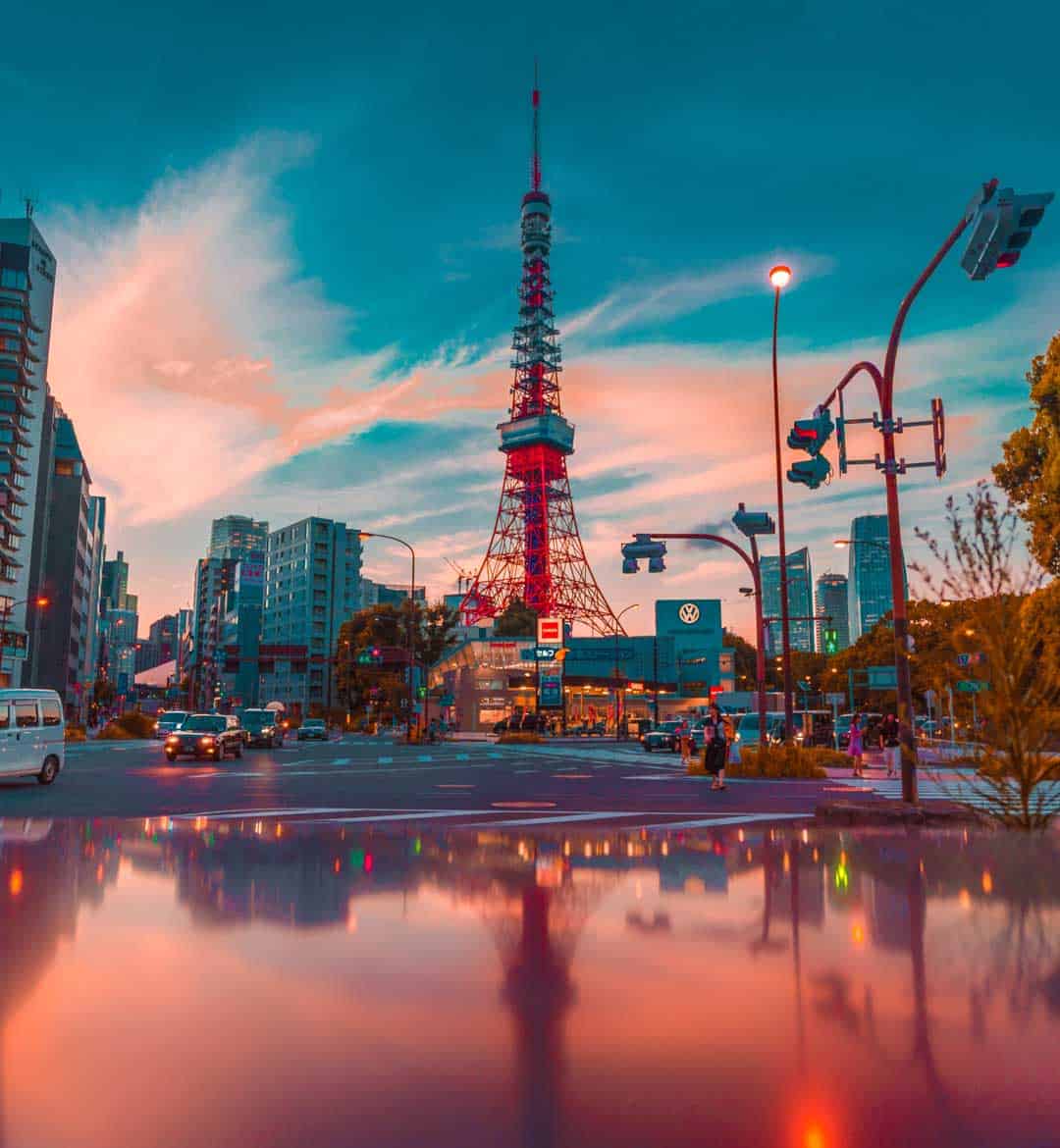
Visit the Lucky Cats at Gotokuji Temple
Japan as a culture is fascinated by cats, and this temple is solely dedicated to them.
It’s one of the most unique places to visit in Tokyo, in that it’s filled with plenty of figures of the famous ‘beckoning cats,’ which show a cat sitting up with a paw raised in the air.
These types of cats are called maneki-neko, and are considered to bring luck, and even though they can come with either paw rising up, Gotokuji focuses solely on the ones with the right paw in the air.
There’s an entire legend behind the temple, too, and it’s about a lord who escaped a thunderstorm by a cat that beckoned him to enter the temple.
The temple is very calm and serene, and sells figurines and charms which are very enticing to visitors.
- Location: Setagaya
- Opening hours: 6 AM – 5 PM
- Price: Free of charge
Why not book yourself a custom city tour with a local? It’s a great way to explore Tokyo in a unique way!
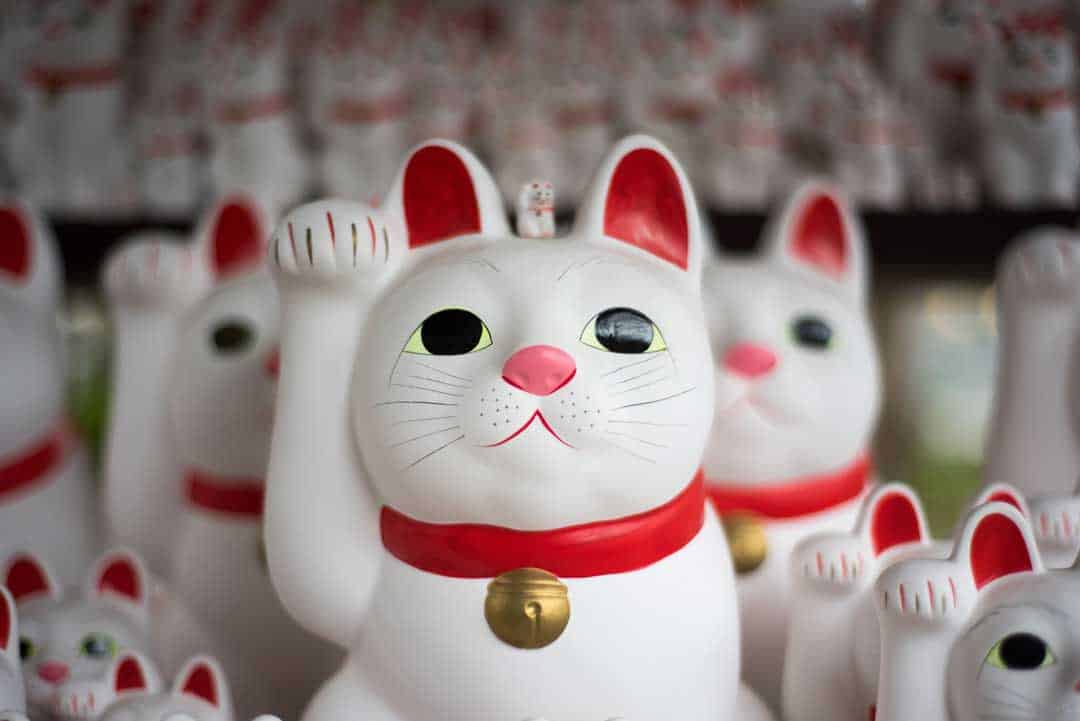
Soak in an Onsen
Soaking in an Japanese onsen, or hot spring, is one of those experiences that almost all visitors want to try at least once.
An onsen is a Japanese bath, typically outdoors, used for the relaxation and enjoyment of bathing.
There are a number of different baths, including rotenburo (outdoor bath), sento (public bath), and kashikiri (slipper bath).
These hot springs have distinct differences but all share the central idea of relaxation and cleanliness.
The baths are split between males and females, and you must be naked to bathe in them. Don’t feel embarrassed – everyone does it, especially the old and young Japanese locals.
Onsen bathing is very popular in Japan especially during winter months when temperatures drop below zero degrees.
A popular onsen theme park to visit for first-timers is Oedo Onsen Mongatari on the Tokyo Bay, and is well worth checking out.
Something to keep in mind is that most onsens in Japan don’t let people with tattoos use them, as tattoos are associated with the Yakuza, or Japanese mafia.
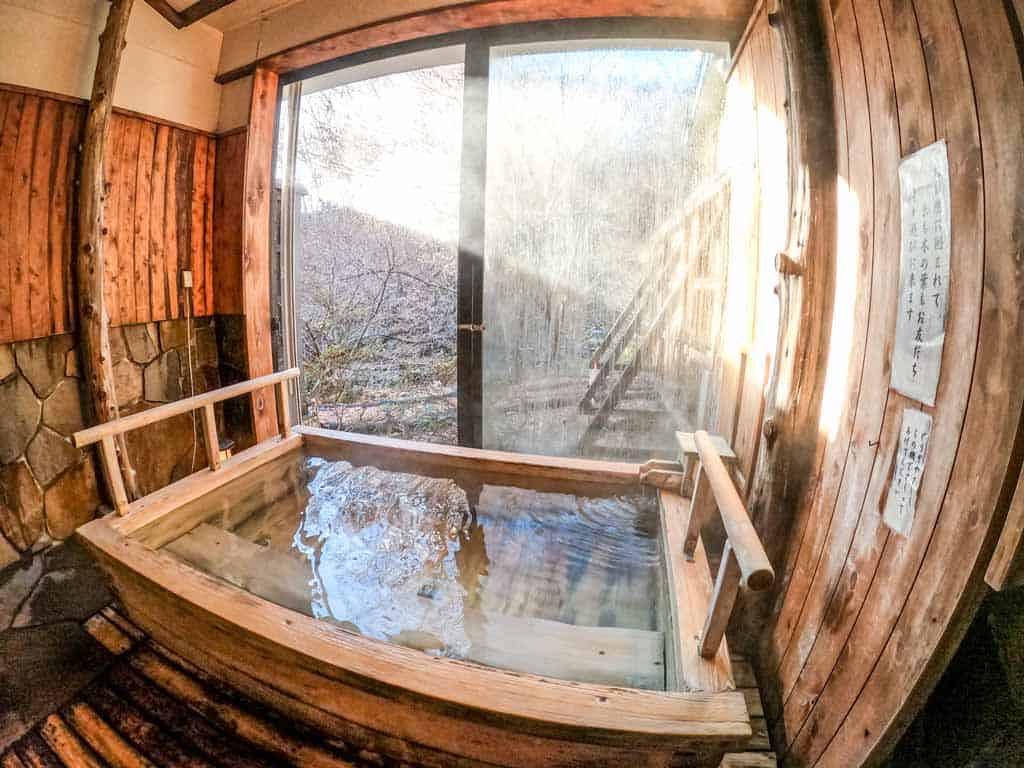
Venerate the Dead at Yasukuni Shrine
Japan has seen its fair share of wars and destruction, which is why this shrine was constructed.
It was founded in 1869 in order to commemorate the souls of the people who gave their lives in the revolution and effort to modernise Japan.
Although this shrine was originally intended only for those that died in the Meiji Restoration, it’s since included the dead from the Sino-Japanese Wars, the Russo-Japanese War, both World Wars, and the Manchurian Incident.
There are over 2.5 million spirits enshrined at this location, and it’s one of the most venerable locations in the city.
It might not be without its share of controversy, due to several war criminals being enshrined here, visiting the shrine is still one of the most poignant things to do in Tokyo.
- Location: Chiyoda
- Opening Hours: 6 AM – 6 PM
- Price: Free of charge
READ MORE: Here’s our list of the top things to do in Kyoto.
Experience Unique Japanese Art
Ukiyo-e is one of Japan’s most unique forms of art, in that it’s actually something like woodblock prints.
The Ota Memorial Museum of Art is a decently sized art gallery that’s considered to be the best spot for experiencing Ukiyo-e.
It has a collection of over 12,000 unique art pieces, some of which are from Japan’s most famous artist Katsushika Hokusai.
This gallery doesn’t have a permanent exhibit per se, because it cycles through its collection by displaying 70 different art pieces each month.
Sometimes there are even special themed exhibits, which might contain works that are not in the original collection.
On top of that, there is a nearby Japanese-style rock garden that’s entirely charming and calm, which is meant to entice visitors to take a rest.
- Location: Shibuya, near Harajuku Station
- Opening hours: 10:30 AM – 5:30 PM
- Price: 700 yen
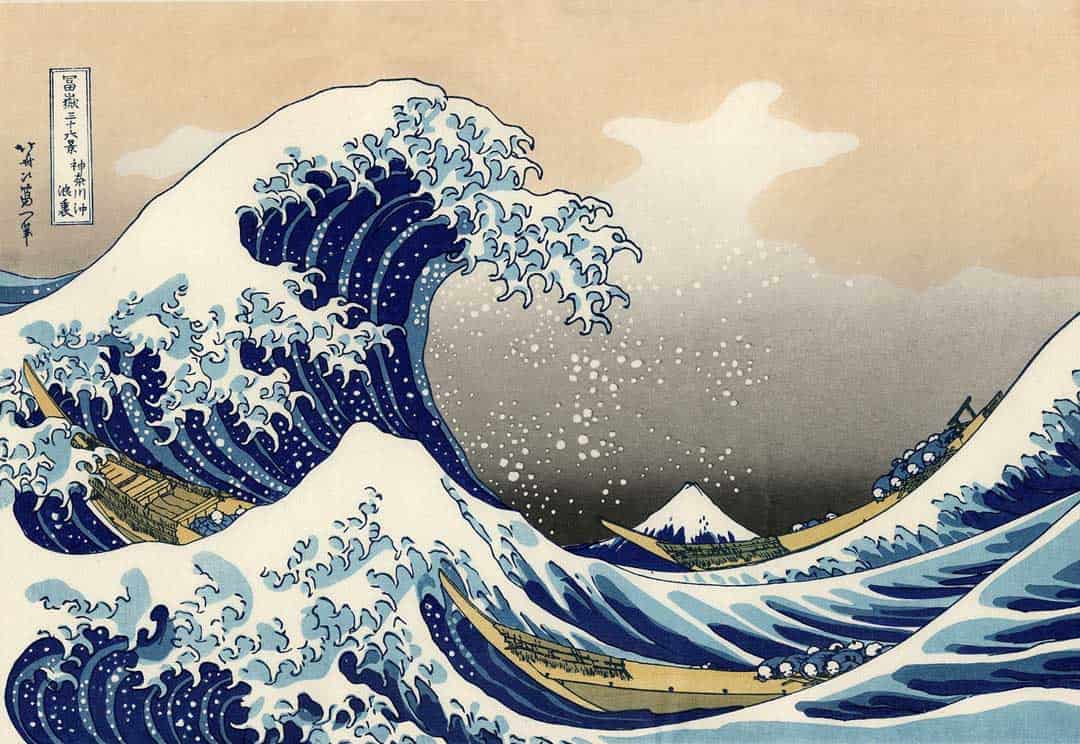
Make a Pilgrimage to Mount Takao
Mount Takao might not be the tallest point near Tokyo, but it’s definitely one of the most important religious sites.
It’s a great place to visit when you’re unsure of what to do in Tokyo and you want to go in search of Old Japan.
It’s been a holy site that pilgrims regularly visit for over 1200 years, and even though there are plenty of tourists climbing its slopes, you can still see an ascetic Buddhist ascending the mountain to give an offering.
There are plenty of old, but well-maintained, buildings to see, and Mount Takao offers exquisite views of Mount Fuji and Tokyo.
If you’re not feeling up to climbing the mountain on foot, there is a cable car that goes straight to the summit so that you can enjoy the views unhindered.
If you visit in March, you can also happen upon Buddhists performing some unique rites of fire-walking, which is one of the most exciting things that happen here.
- Location: Hachioji
- Price: Free (550 yen for cable car)
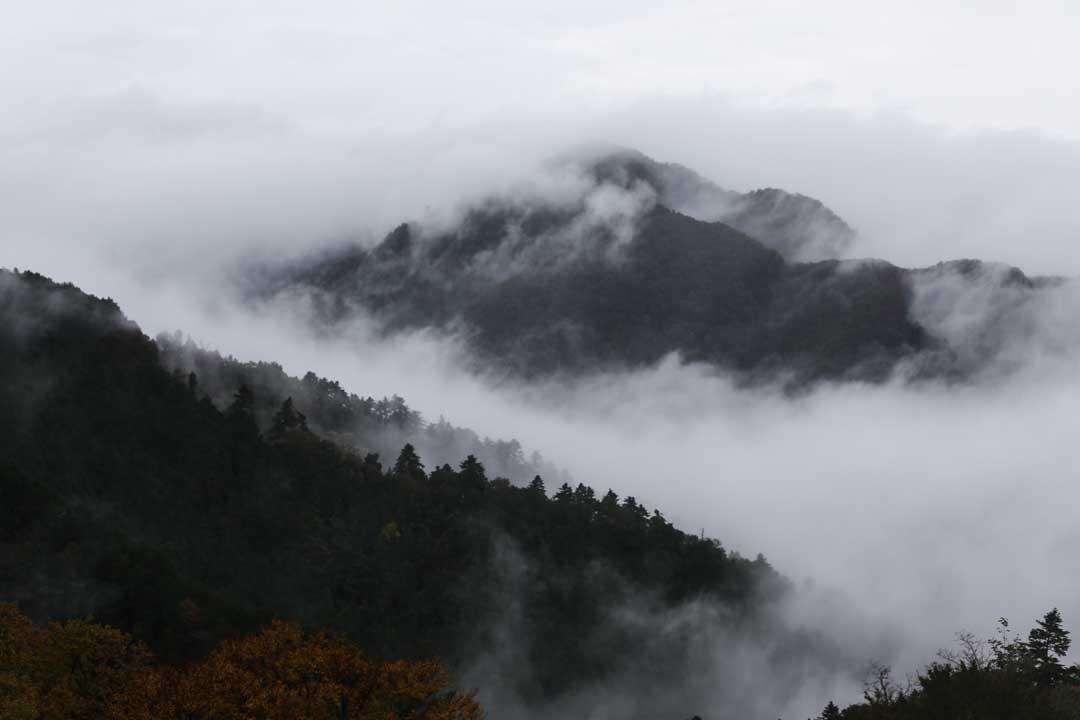
Bike Your Way Through Yoyogi Park
Tokyo as a city is very easy to bike through.
Since it’s mostly located on flat terrain, it’s a breeze to cycle through the city, but it has just enough hilly neighbourhoods so you won’t get bored.
A unique aspect of Tokyo is that its air quality is impeccable, and that even though the city’s traffic can clog easily, biking is still very enjoyable.
However, Tokyo is enormous, so don’t expect that you’ll be able to cycle all the time, since it’d take you months to fully explore the city.
Given that, a local and tourist favourite for biking and cycling is Yoyogi Park, which is an extensive expanse of greenery.
It’s a joy to bike through, and there are all-day rentals that are very affordable, and it has a great location too near Meiji Shrine.
- Location: Harajuki
- Opening hours: Dusk to dawn
- Price: The price of renting your bicycle
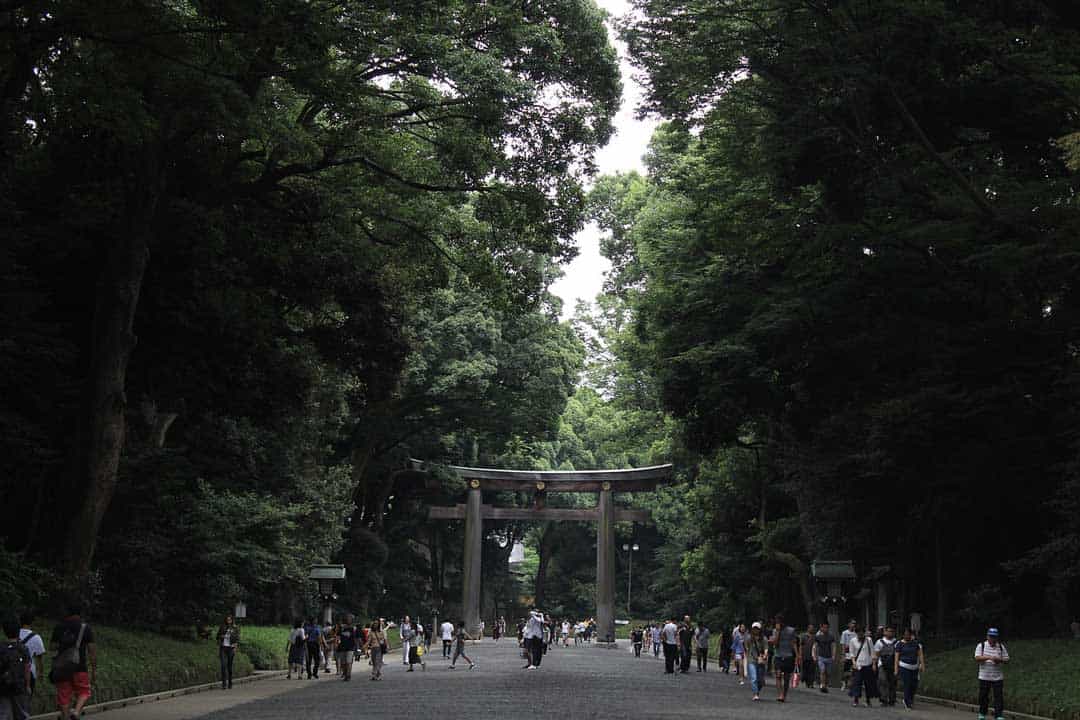
Take a Walk in Inokashira Park
Considered as the first suburban park in Japan, Inokashira Park is one of the most beautiful spots in Tokyo.
The park is pretty much a real oasis, but only that it regularly sees different displays of art, like from cinema.
In the centre of the park, there’s the famous Inokashira Pond, which is significantly large and popular due to the main boats you can hire to ride in the pond.
On top of that, here you’ll find plenty of other popular attractions, like the Studio Ghibli Museum, the Inokashira Park Zoo, and the Inokashira Benzaiten Shrine, which was built by a famous military commander.
Since the park is older than one hundred years, it’s left virtually unchanged, and all of its natural beauties come from its age.
Due to the proximity of the nearby trendy and fashionable neighbourhood of Kichijoji, the park sees a lot of activity since it’s become a sort-of second hub for teenagers who hang out in Kichijoji itself.
- Location: Kichijoji
- Opening hours: Open 24 Hours
- Price: Free
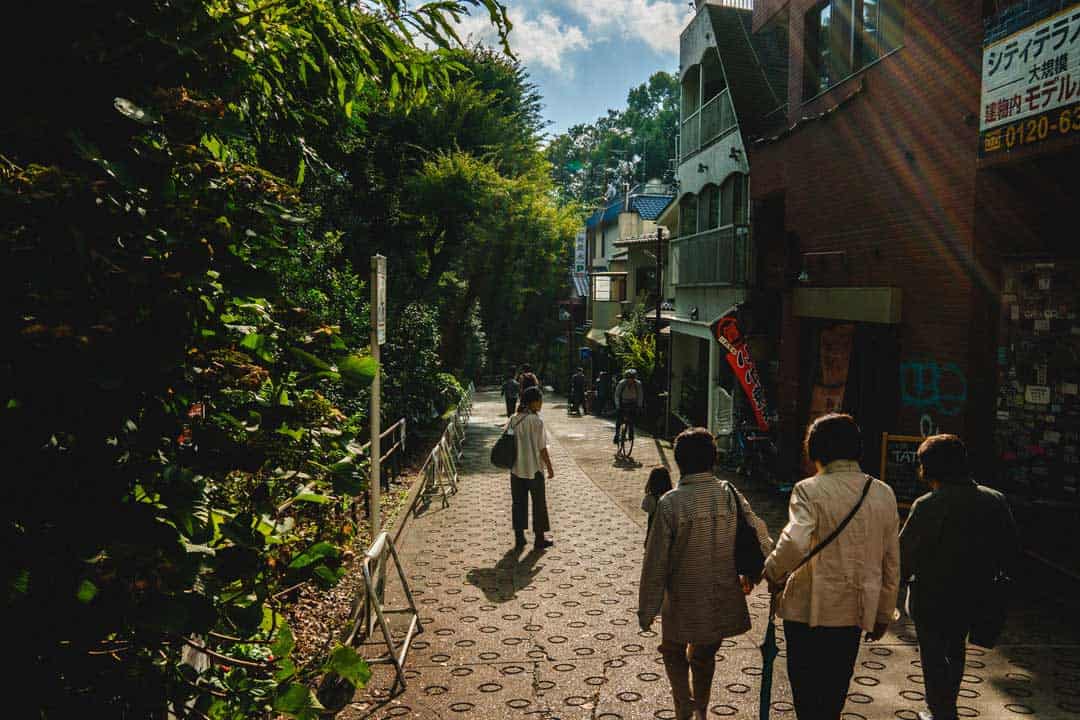
Hike Along the Tamagawa Josui Canal
The Tama River, or Tamagawa, is a very important source of freshwater in Tokyo.
Although this canal is no longer in use like it was in the past, it’s still one of the most popular spots to take a long hike.
In the past, it was used as the primary source of water, as the saltwater near the city is undrinkable, and most other rivers were polluted enough so they weren’t drinkable.
Today, the route along the canal is considered a Green Road, and it runs almost the entire length of the canal.
When outside the central parts of Tokyo, this canal still carries water, although that is more for aesthetic purposes, rather than from necessity.
The water in the canal starts to disappear underground in the Setagaya Ward, but the park’s route continues to run straight to Shinjuku.
Trees surround the walkway on both sides, and this area is one of the freshest and most beautiful in the entire city.
READ MORE: Check out our article filled with the best things to do in Hiroshima.
Explore the Gorgeous Limestone Caverns
The Nippara Limestone caverns may be outside of Tokyo but they’re absolutely worth the visit.
Few things can actually compare to the awe and natural majesty of these caves that have formed millions of years ago.
Even taking a trip to these caves feels grand, as you’ll be passing through gorgeous scenery and mountainous regions, so make sure to keep your eyes open at all times.
One of the best things about these caves is the cool temperature, and because of this they’re the ideal respite when you’re visiting Tokyo in the hot summer months.
Once you’re at the caves, you’ll be immediately met with a chilly breeze and a narrow entrance, but after that, they instantly open up and reveal large caverns that are perfect for exploration.
There are maps at the start of the caverns, but unfortunately they’re in Japanese only, but getting lost is very difficult since all paths eventually lead back to the entrance.
Exploring Japan’s geological history is definitely one of the most unique things to do in Tokyo, and you’ll be glad once you’ve taken the time to explore them.
- Location: Tama area
- Opening hours: 9 AM – 5 PM
- Price: 800 yen
Get Lost in Chichibu-Kama-Tai National Park
As one of the finest places to explore and hike, Chichibu-Kama-Tai National Park is definitely a place everyone should visit.
It’s an enormous place, and at 1200 square kilometers, it has plenty of areas that are ideal for hiking.
This national park covers several prefectures, meaning it’s very diverse and you’ll have access to plenty of smaller towns in the region.
The park stretches out from Tokyo on the west, and it encompasses mountains, valleys, gorges, hiking trails, and so much more.
It’s considered one of the finest natural areas in Japan.
Two of the most popular mountains of the region are in this park, and they are Mount Mitake and Mount Mitsumine, which are very well known for their excellent trails, but also for the Shinto shrines located at their peaks.
There is a nearby mountain called Mount Buko, but it’s not technically part of the national park, although it has one of the most popular hiking trails in the vicinity of Tokyo.
- Location: Tama
- Opening hours: 9 AM – 5 PM
- Price: Free – 200 yen in cherry bloom season
Have a Picnic at Showa Memorial Park
Although this park is younger than most other parks in Tokyo, it’s still very impressive and beautiful nonetheless.
It’s a 160-acre park that’s just filled with natural beauties – the likes of seasonal flowers, special water features, sports amenities, and even museums.
This park even has dedicated spots for picnics, which is definitely one of the finest things to do in Tokyo.
The park was opened in 1983 in order to commemorate Emperor Showa’s 50 years of rule.
After his passing away, a memorial museum was built in his honour, which showcases some of his personal belongings, and even the car that he personally drove.
Cherry blossom flowers blooming is also a very popular thing to witness here, as it usually happens a few days later than in central Tokyo, and everyone is able to catch up on it.
Other than that, here you can enjoy beautiful Japanese and Western gardens, along with beautiful and perfectly maintained seasonal flowers.
- Location: Akishima & Tachikawa
- Opening hours: 9:30 AM – 5 PM
- Price: 450 Yen
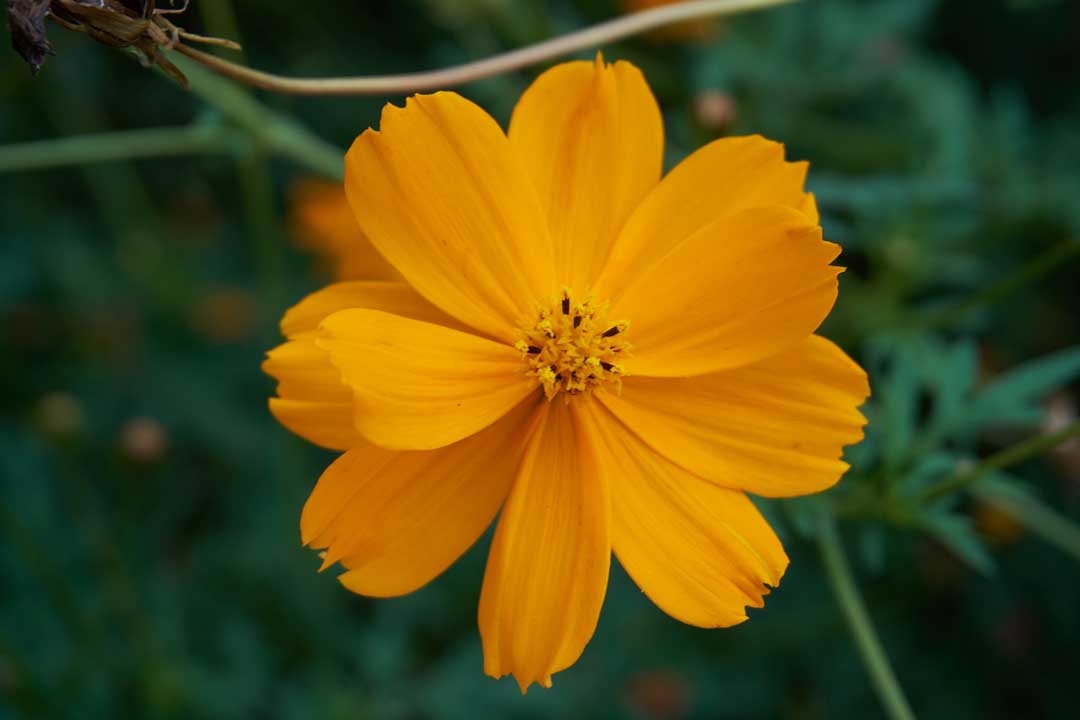
DISCLAIMER: Some of the links in this article are affiliate links, which means if you book accommodation, tours or buy a product, we will receive a small commission at no extra cost to you. These commissions help us keep creating more free travel content to help people plan their holidays and adventures. We only recommend the best accommodations, tours and products, and regularly review these. Thanks for your support, kind friend!
[ad_2]
Source link







More Stories
How To Promote Direct Hotel Bookings
My 50th birthday celebrations in Amsterdam
5 Ways to Improve Hotel Operational Efficiency